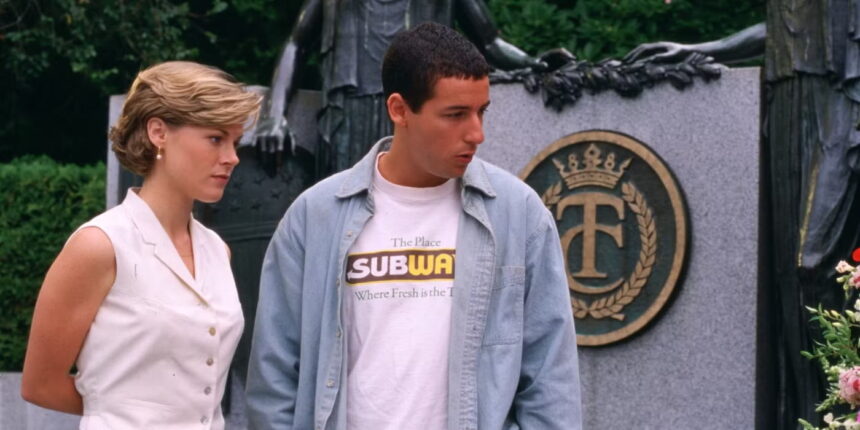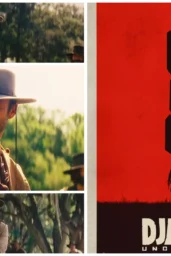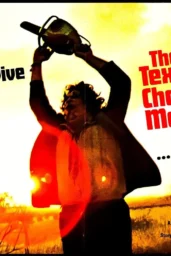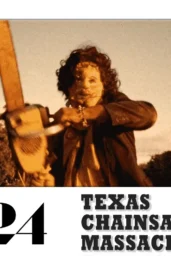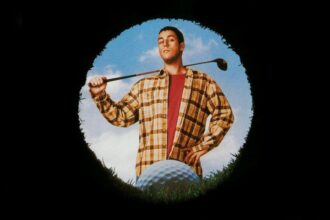It takes a certain kind of nerve to kill a beloved character in the first ten minutes of a comedy sequel. It takes even more to double down on that decision in press interviews. But that's exactly what Happy Gilmore 2 director Kyle Newacheck and star Julie Bowen have done—standing by the film's early shocker: the sudden, off-screen death of Virginia Venit, Happy's love interest from the original 1996 film.
And here's the twist: it's not just a narrative footnote. Happy, now older and broken, accidentally kills her with a rogue golf ball. That's the core trauma driving this new Netflix sequel.
Let that sink in.
When Comedy Swings Into Darkness
Nearly three decades after Happy Gilmore made Sandler a Gen-X comedy staple, the sequel finds him channeling grief, alcoholism, and guilt in ways most fans didn't expect—or necessarily want. The original film's absurdist sports slapstick is still here, but now it's drenched in the kind of melancholy that makes you question why you ever laughed at Bob Barker getting punched in the face.
And yes, Happy Gilmore 2 is a massive success. Released globally on July 18, 2025, the film has already claimed the top spot on Netflix's worldwide Top 10 and shattered the streamer's previous record for most opening weekend streams for a comedy sequel. But critical response? Mixed, leaning baffled.
Some find the tonal pivot daring. Others feel sucker-punched by the film's existential detour. One viral comment on X reads: “What they did to the GOAT Virginia Venit was almost a fatal flaw in the movie.”
They're not wrong.
The Director's Defense: “If You Pull That Out, You Don't Have Anything Real”
In an interview with SlashFilm, director Kyle Newacheck (best known for Workaholics and Game Over, Man!) didn't mince words when asked why they chose to kill off Virginia.
“There's always a concern when you're playing with that type of darkness… but it is the driving force of the film. If you pull that out, then what do you have? You don't have anything real.”
Newacheck, clearly drawn to the tension between slapstick and sorrow, argues that Happy Gilmore 2 is still in tonal dialogue with the original—which, to be fair, did contain elements of dark humor. Shooter McGavin wasn't exactly playing fair. But Virginia's death? That's not a punchline. It's a funeral pyre.
The gamble here is clear: can a nostalgic sports comedy shoulder the weight of tragedy and still deliver the laughs? Happy Gilmore 2 doesn't quite stick the landing—but at least it tries.
Julie Bowen's Take: “Happy Can't Be Happy”
While fans mourn Virginia's absence, actress Julie Bowen doesn't.
In a recent People interview, Bowen described learning of her character's death while on a remote family vacation with barely any cell service.
“I started laughing. And laughing. And laughing. I go, ‘I don't care. It's great. Happy can't be happy.'”
That last line says everything about the sequel's tonal playbook. Happy Gilmore 2 reframes its protagonist not as a chaotic everyman, but as a man weighed down by time, regret, and his own failings—both personal and professional.
Bowen's reaction—equal parts disbelief and admiration—makes it clear this wasn't a studio-mandated twist. It was intentional, authored, and personal. And in the age of algorithmic screenwriting, that counts for something.
Netflix's Risk Strategy: Nostalgia Meets Trauma
From a production standpoint, this is a fascinating move by Netflix. Leaning into legacy IP is nothing new for the streamer—Beverly Hills Cop: Axel F landed just last month—but Happy Gilmore 2 is something different. It's not a victory lap. It's a funeral procession with a golf cart.
Written by Sandler and longtime collaborator Tim Herlihy, the sequel flirts with prestige in a way that's structurally bold, if not always tonally consistent. The supporting cast—Benito Antonio Martínez Ocasio (Bad Bunny), Benny Safdie, and a menacing Ben Stiller—add texture, but the shadow of Virginia looms large.
Would this film exist without her death? Probably not. Would it be better if she lived? That's the real question. Some argue her presence could have anchored the chaos. Others believe her absence gives the film its soul—however bitter that soul may be.
Final Thoughts: A Bold Swing, But Was It the Right Shot?
Killing off Virginia Venit in Happy Gilmore 2 was never going to be popular. It undercuts the comfort-food quality that defines most nostalgia sequels. But it also forces Sandler—one of Hollywood's most emotionally agile comedians—to do something real.
Newacheck and Bowen's defenses aren't excuses. They're declarations of intent. And whether or not you agree with that intent depends on how willing you are to follow a 90s icon into the darker chapters of middle age.
It's not the film I expected. I'm still not sure if I like it. But I respect the hell out of the swing.

